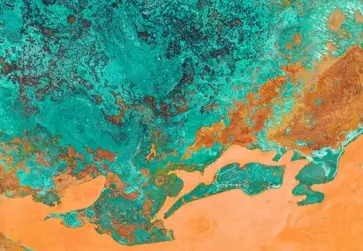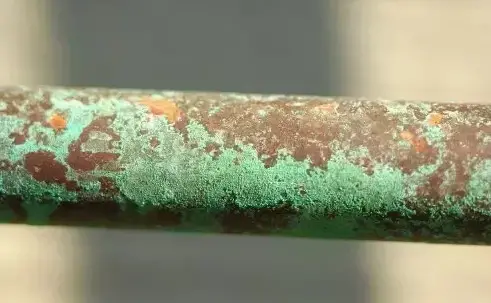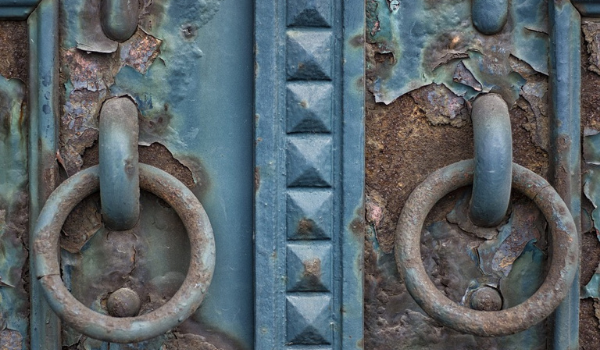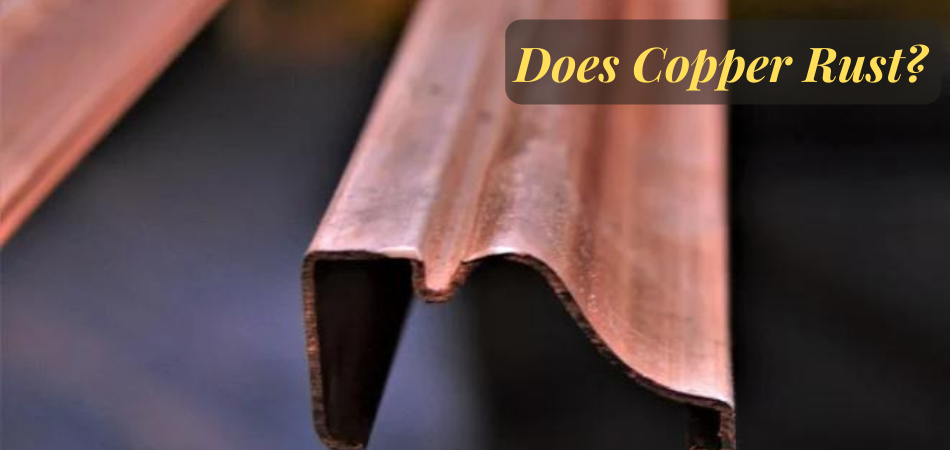Copper is a non-ferrous metal, and the answer to whether it can rust or not can be a little bit tricky. However, technically speaking, does copper rust? since rust requires the presence of iron, which is largely absent in copper.
No, Copper does not rust or corrode like other metals, making it an ideal material for medical equipment and household items that come into contact with food and liquids.
However, copper will wear over time and develop a beautiful patina. It will not rust, but it can corrode. Corrosion is the gradual destruction of materials (usually a metal) by chemical or electrochemical reactions with their environment.
This article will explain all you need to know about copper by pointing out the difference between the oxidation process that affects ferrous metals and non-ferrous metals. We will also help you know how long it takes to corrode and how to protect your copper from corroding.
Contents
Rust in Copper
Generally, rust is attributed to metals that contain iron. However, corrosion affects all types of metals, including alloys. Rust is, technically, the production of ferrous oxide as a result of the chemical reaction that involves oxygen, water, and iron. For this reason, ferrous metals such as steel, wrought iron, and cast iron, rust. Note that rust is a product of the oxidation process that produces ferrous oxide.

However, the oxidation process that takes place in copper does not produce ferrous oxide. Therefore, it will be technically incorrect to say copper rusts. Although copper corrodes, the oxidation process that affects copper produces copper carbonate, and it is physically recognizable by the green coloration of the metal.
The corrosion in copper, a non-ferrous metal is a reaction between copper, carbon, oxygen, and water. It occurs when copper and its alloys are exposed to the atmosphere, where oxygen is abundant, in the presence of water, resulting in the chemical reaction that causes the carbon in the metal to oxidize and produce copper carbonate.
Therefore, copper does not rust, it oxidizes to form a greenish patina that some people consider to be of great aesthetic value, as is evident in the famous statue of liberty. It is a copper statue that has undergone oxidization, leaving it green from the production of copper carbonate.
How Long Does It Take Copper to Rust?
Considering the extensive use of copper and its alloys in the manufacture of water vessels such as boats, one will think it is crazy to use such material for such a purpose since it is affected by water. In fact, seawater speeds up the corrosion process of copper. However, it is important to note that copper has a low level of chemical reactivity, hence its durability and reluctance to corrode in the natural environment.

Copper corrosion, that is the formation of the green patina after oxidation, usually takes about 20 years to fully form on a penny, and it can take longer on other extensive copper materials. A copper water pipe that is constantly under flowing pressure from the water can take as long as 70 years before it begins to corrode.
The base of boats, made with a mixture of copper and nickel do not corrode quickly due to the low reactivity of the metal. Therefore, you can expect copper to remain brown – its natural color – for an average of 20 years before it begins to corrode. After then, the green patina protects the other layers of the metal from corrosion.
How to Protect Copper from Rust?
Now that you know that copper does not rust but corrodes, how can you protect your copper wares from corrosion? Although some people consider the green patina to be aesthetic, what can you do to prevent it from happening to your outdoor wares, if you don’t want it?

Firstly, you should note that unless you live in a highly humid environment, you may have no need to prevent your copper outdoor wares from corrosion, as they have low reactivity, compared to other metals such as iron. However, if you must protect copper wares, the most common means is to coat the metal.
The copper metal coating prevents the metal surface from reacting with the elements of weather and preserves the bright brown surface. You can achieve this by applying a clear coating on the surface of the copper wares, depending on their intended use. Some of such coatings include:
Epoxy Coatings
Epoxy coatings are relatively expensive and they are only available in the thermosetting type. They are more useful as internal coating materials and darken and degrade quickly when used for external protection. However, they are resistant to chemicals and wear.
Acrylic Coating
An acrylic coating will protect your outdoor copper wares and furniture depending on the type you purchase. There is the airdry type and the thermosetting type. The former is suitable for an exterior application while the latter is used for interior application. They are relatively costly.
Nitrocellulose Coating
These are the cheapest copper coating materials you will find. They air-dry easily and do not require any form of expertise before use. However, you need to clean the copperware surface properly before application. You will also need to reapply the coat every year to preserve the copperware.
Final Thought
Copper is a non-ferrous metal, and, therefore, does not rust in the technical sense of the word. However, it corrodes and forms a green patina that some people find aesthetic. Copper has a low chemical reactivity, hence, its high resistance to corrosion and its use in making water vessels. However, it takes about 20 years of constant water pressure for it to corrode.


